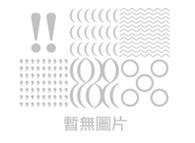
7
0
0
0
0
1D oxide nanostructures obtained by sol-gel and hydrothermal methods
- 作者: Anastasescu, Crina, author.
- 其他作者:
- 其他題名:
- SpringerBriefs in materials.
- 出版: Cham : Springer International Publishing :Imprint: Springer
- 叢書名: SpringerBriefs in materials,
- 主題: Nanostructured materials. , Materials Science. , Ceramics, Glass, Composites, Natural Methods. , Nanochemistry. , Nanoscale Science and Technology. , Optical and Electronic Materials. , Optics, Lasers, Photonics, Optical Devices. , Catalysis.
- ISBN: 9783319329888 (electronic bk.) 、 9783319329864 (paper)
-
FIND@SFXID:
 CGU
CGU
- 資料類型: 電子書
- 內容註: Introduction (general considerations on the 1 D oxide nanostructures) -- Synthesis of oxide nanotubes by sol-gel method -- Synthesis of oxide nanotubes/nanorods by hydrothermal method.
- 摘要註: This book presents wet chemical sol-gel and hydrothermal methods for 1D oxide nanostructure preparation. These methods represent an attractive route to multifunctional nanomaterials synthesis, as they are versatile, inexpensive and, thus, appropriate for obtaining a wide range of oxide materials with tailored morphology and properties. Three specific oxides (SiO2, TiO2, ZnO) are discussed in detail in order to illustrate the principle of the sol-gel and hydrothermal preparation of 1D oxide nanostructures. Other oxides synthesized via this method are also briefly presented. Throughout the book, the correlation between the tubular structure and the physico-chemical properties of these materials is highlighted. 1D oxide nanostructures exhibit interesting optical and electrical properties, due to their confined morphology. In addition, a well-defined geometry can be associated with chemically active species. For example, the pure SiO2 nanotubes presented a slight photocatalytic activity, while the Pt-doped SiO2 tubular materials act as microreactors in catalytic reactions. In the case of titania and titanate nanotubes, large specific surface area and pore volume, ion-exchange ability, enhanced light absorption, and fast electron-transport capability have attracted significant research interest. The chemical and physical modifications (microwave assisted hydrothermal methods) discussed here improve the formation kinetics of the nanotubes. The ZnO nanorods/tubes were prepared as random particles or as large areas of small, oriented 1D ZnO nanostructures on a variety of substrates. In the latter case a sol-gel layer is deposited on the substrate prior to the hydrothermal preparation. Using appropriate dopants, coatings of ZnO nanorods with controlled electrical behavior can be obtained.
-
讀者標籤:
- 系統號: 005368019 | 機讀編目格式
館藏資訊
